- Home
- Robert Graves
King Jesus Page 2
King Jesus Read online
Page 2
This compromise had its disadvantages, as all compromises have : the greatest of which was the mass of petty contradictions in the official account of the life and teachings of Jesus which resulted from the fusion of rival traditions. The mediators between the two societies were the Petrines, or followers of the Galilean apostle Peter, strangely enough a converted Zealot, or militant nationalist, who had been rejected by the followers of James for consorting with the followers of Paul, and by the followers of Paul for consorting with the followers of James. As Jesus had foreseen, it was on the Petrine rock that the Church was finally founded : Peter’s name now stands on the diptychs before that of Paul.
Let nobody be misled by the libels against the Jews in general and the Pharisees in particular which, despite the nominal reconciliation of the Churches, are still circulated among the Chrestians of Rome. The Jews are accused by the Gentile libellists of having universally rejected Jesus. Let me repeat that the Jews did nothing of the sort. All his disciples were Jews. The Judaic Chrestians remained an honourable sect in Judaea and Galilee until the so-called “secession to Pella”. Throughout the years intervening, they had taken part without question in Temple worship and in that of the synagogue ; which is not surprising, seeing that Jesus himself had done the same and had explicitly told the woman of Samaritan Shechem : “Salvation comes from the Jews.”
The Jews are also accused of having officially sentenced Jesus to death by crucifixion after a formal trial by the Beth Din, or religious High Court ; they did nothing of the sort. Nobody with the least knowledge of Jewish legal procedure can possibly credit that the High Court condemned him to death, or doubt that it was the Roman soldiers who crucified him at Pilate’s order.
As for the Pharisees, who are represented by the libellists as having been Jesus’s greatest enemies : he never denounced this enlightened sect as a whole, but only individual members who failed in their high moral pretensions, or outsiders who falsely pretended to be Pharisees—especially those who, taking advantage of his dialectical method of teaching, tried to entrap him into revolutionary statements. For the Pharisees softened by their remarkable humanity the harsher provisions of the ancient Mosaic Law and both preached and practised those very virtues which Gentile Chrestians now pretend to be exclusively and originally Chrestian. Their moral code was first formulated shortly after the Exile by descendants of the original Aaronic priesthood which had been removed from high office in the reign of King Solomon by the usurping Zadokites, or Sadducees ; as priests without stipend or distractive ecclesiastical duties they were able to refine spiritual values without the taint of politics. Jesus denouncing the Pharisees indeed! It is as though Socrates were represented as having denounced philosophers in general because he had found flaws in the arguments of particular sophists.
The ecclesiastical Sadducees, who were necessarily politicians, had little sense of the peculiar spiritual mission with which the Jews as a whole considered themselves entrusted, and were always ready to meet foreigners half-way by a deliberate blurring of their national peculiarities. When the Pharisees, which means the Separated Ones—those who separate themselves from what is impure—had made their popular religious revolt under Maccabee leadership against the Hellenizing Seleucids, the Syrian heirs of King Alexander the Great, it was the Sadducees who undid their work by persuading the later Maccabees to backslide half-way to Hellenism again. The Pharisaic principle of taking arms only in defence of religious freedom was abandoned by the Sadducees, and the consequent enlargement of a small poor kingdom by wars of aggression against Edom and Samaria proved its eventual undoing.
Gentile Chrestians who quote Jesus as having made apparently damaging criticisms of the Mosaic Law are unaware that, as often as not, he was merely quoting with approval the critical remarks of Rabbi Hillel, the most revered of all Pharisaic doctors ; and I would not have you ignorant that in certain remote Syrian villages where Judaic Chrestians and Jews still manage to live amicably side by side, the Chrestians are admitted to worship in the synagogues and are reckoned as a sub-sect of the Pharisees.
There were, I grant, degrees of Pharisaism in the time of Jesus ; as he pointed out, material prosperity tends to weaken the spiritual sense, and many so-called Pharisees had forgotten the spirit of the Law and remembered only the letter ; but in general the spirit triumphed over the letter, and in the monastic order of the Essenes, who were the most conservative sort of Pharisees, spirituality and loving-kindness were practised in a more orderly and humane style than in any Chrestian society of to-day which has not modelled its discipline closely upon theirs.
It will be asked : What reason have the libellists to circulate these statements if there is no truth in them? The answer is plain. Not only do the remaining Judaic Chrestians still refuse to deify Jesus, since for Jews there is only one God ; but, the Gentile Chrestians being ignorant of Hebrew, Judaists naturally stand at a great advantage in expounding both the Messianic prophecies relating to Jesus and the collected corpus of his moral discourses and pronouncements. This has bred jealousy and resentment. Truths that to a Gentile brought up in the Olympian faith seem a wholly original illumination appear to the Judaists as a logical development of Pharisaism.
I once heard a Roman Chrestian cry out at a love-feast where I was a guest : “Listen, brothers and sisters in Christ, I bring glad tidings! Jesus rolled up the Ten Commandments given to Moses, by substituting two of his own : ‘Thou shalt love the Lord thy God with all thy heart and with all thy soul and with all thy strength.’ And ‘Thou shalt love thy neighbour as thyself.’ ”
Great applause.
A former Judaist sitting next to me blinked a little and then said dryly : “Yes, brother, that was well said by the Christ! And now I hear that those rascally Jewish copyists have stolen his wisdom and interpolated the first of these two overriding Commandments into the sixth chapter of the Book of Deuteronomy, and the second into the nineteenth chapter of the Book of Leviticus !”
“May the Lord God pardon their thievish wickedness !” cried a pious matron from the other end of the table. “I am sure that the Pharisees are at the bottom of it !”
Not wishing to cause a tumult, I refrained from reminding her that Jesus had praised the Pharisees as “the righteous who need no repentance” and as “the able-bodied who have no need of a physician”, and in his fable of the spendthrift runaway had made them the type of the honest son who stayed at home : “Son, you have always remained dutifully with me and all my goods are yours.”
In Chrestian Churches, as among the Orphics and other religious societies, secret doctrine is taught largely in the form of drama. This, though an ancient and admirable way of conveying religious truth, has its disadvantages when the characters are historical rather than mythical ; and when the worshippers accept as literally true what is merely dramatic invention. I have before me a copy of the Nativity Drama now used by the Egyptian Church, in which the principal speakers are the Angel Gabriel, Mary the Mother of Jesus, Mary’s cousin Elizabeth, Elizabeth’s husband Zacharias the Priest, Joseph, Mary’s husband, three shepherds, three astrologers, the midwife Salome, King Herod, Anna the prophetess and Simeon the Priest. The play is simply but skilfully written, and I have no fault at all to find with it as devotional literature. Its purpose is to demonstrate that Jesus was the expected Jewish Messiah, and more than this, that he was the same Divine Child who had been foreshadowed in all the ancient mysteries—Greek, Egyptian, Celtic, Armenian and even Indian. The third scene, for instance, opens in the Bethlehem stable on a darkened stage.
The Cock (crowing) : “Christ is born !”
The Bull (lowing) : “Where ?”
The Ass (braying) : “In Bethlehem!”
These creatures, by the way, are not quaint characters borrowed from the Fables of Aesop : they are sacred animals. The cock is sacred to Hermes Conductor of Souls and to Aesculapius the Healer. It dispels the darkness of night, is the augur of the reborn Sun. You will recall that almost the last
words spoken by Socrates before he drank the hemlock were a reminder to a friend that he had vowed a cock to Aesculapius : he was expressing, I suppose, his hope in resurrection. The cock likewise figures in the story of Jesus’s last sufferings and is now interpreted as an augur of his resurrection ; though I find this notion far-fetched. The bull and the ass are the symbolic beasts of the two promised Messiahs, the Messiah Son of Joseph and the Messiah Son of David, with both of whom the Chrestians identify Jesus. The “feet of the bull and the ass” mentioned in the thirty-second chapter of Isaiah are invariably explained by Jewish commentators as referring to the two Messiahs.
After this brief dialogue between the creatures, the day dawns, and the Holy Family are discovered together. Virgin Mother and Child in their ancient pose : the mother wearing a blue robe and a crown of silver stars, the child traditionally laid in the manger-basket which is used for the same purpose in both the Delphic and Eleusinian mysteries. Bearded Joseph leans on a staff a little way off, not crowned nor even clothed in purple—the type of all just men whose virtue has earned them a part in the divine illumination. Distant sounds of drum and pipe, gradually nearing. Enter three joyful shepherds, like those of Mount Ida who adored the infant Zeus…. Or (if it is permitted to disclose this) like the mystagogues dressed as shepherds who, at the ceremony of Advent which gives its name to the Eleusinian mysteries, introduce the virgin-born infant by torchlight and cry : “Rejoice, rejoice, we have found our King, son of the Daughter of the Sea, lying in this basket among the river reeds !”
Now, I do not question the tradition that the infant Jesus was laid in a manger-basket in a stable, nor that shepherds arrived to adore him, but the rest of the scene must not be read as literally true : it is rather what Aristotle in his Poetics terms “philosophically true”. And I cannot, though my authorities are reliable, be sure that my own Nativity narrative is correct in every particular, but I will say this much. An expert in Greek sculpture or pottery can usually restore the lost details of a damaged work of art : take for example a black-figured vase, with a scene of the harrowing of Hell by Orpheus. If the Danaids are there with their sieves and, next to them, above a defaced patch, the expert notices part of a bunch of grapes and two fingers of a clutching hand and, beyond, a rough piece of rock, that is detail enough : he imaginatively sees Tantalus gasping for thirst, and his fellow-criminal Sisyphus pushing the outrageous boulder up the hill. My own problem of reconstruction is very much more difficult, because history, not myth, is in question. Yet the history of Jesus from his Nativity onwards keeps so close to what may be regarded as a pre-ordained mythical pattern, that I have in many instances been able to presume events which I afterwards proved by historical research to have taken place, and this has encouraged me to hope that where my account cannot be substantiated it is not altogether without truth. For instance, Jesus has so much in common with the hero Perseus, that the attempt made by King Acrisius to kill the infant Perseus seems relevant to the story of Jesus too ; this Acrisius was the grandfather of Perseus.
I have also witnessed the performance of another religious drama, concerned with the final sufferings of Jesus. The Chrestian fear of offending the Romans makes this play a masterpiece of disingenuousness. Since only what was publicly said or done on that painful occasion is enacted on the stage, Pilate’s infamous behaviour appears correct and even magnanimous and the entire blame for the judicial murder is, by implication, laid upon the Jews whose spokesman the High Priest claims to be.
But I must now warn you against accepting the Hebrew Scriptures at their face value. Only the rhapsodies of the Hebrew poets, the so-called “prophetic books”, can be read without constant suspicion that the text has been tampered with by priestly editors, and these too are for the most part incorrectly dated and credited to authors who could not possibly have written them. These unscholarly practices the Jews justify with : “Whoever speaks a good thing in the name of the one who should have spoken it brings salvation to the world.” The historical and legal books have become so corrupted in the course of time, partly by accident and partly by editing, that even the shrewdest scholars cannot hope to unravel all the tangles and restore the original text. Still, by comparison of Hebrew myths with the popular myths of Canaan, and of Jewish history with the history of neighbouring nations, a general working knowledge can be won of the ancient events and legal traditions most relevant to the secret story of Jesus, which is all that need concern us here.
What an extraordinary story it is, too! Slave to books though I am, I have never in all my reading come across its match. And, after all, if the Gentile Chrestians, despite the clear prohibitions of the Hebrew Law against idolatry, are moved to partake of Jesus’s substance in their symbolic Eucharist and to worship him as a God, declaring : “None was ever like him before, nor will be again, until he returns to earth !”—who, except the devout Jew, can blame them? To be laid at birth in a manger-basket, to be crowned King, to suffer voluntarily on a cross, to conquer death, to become immortal : such was the destiny of this last and noblest scion of the most venerable royal line in the world.
Chapter Two
Children of Rahab
ANNA, daughter of Phanuel of the tribe of Asher, had been widowed for sixty-five years ; but the memory of her husband’s benefactions to the Temple and her own remarkable devoutness, which kept her in the Women’s Court of the Temple night and day, had secured her at last an honourable office, that of guardian mother to the holy virgins. These were wards of the Temple, and were instructed by her in obedience and humility, in music and dancing, in spinning and embroidery, and in the management of a household. All were Daughters of Aaron, members of the ancient Levite nobility, and had for the most part been dedicated to the Temple by their parents as an insurance against an unworthy marriage. Pious, rich and well-born husbands could always be found for Temple virgins. Their initiation into the lore of their clan was in the hands of the guardian mother, who was tested by the High Priest’s deputy for knowledge of Temple procedure and correct deportment but, being a woman, was not expected to have a perfect understanding of religious doctrine. Since their return from Babylonian captivity under Ezra, the Levites had denied the Daughters of Aaron their former function as priestesses, debarring them, with all other women, from any closer approach to the Sanctuary than the Women’s Court, which was separated from it by a massive wall and the spacious Men’s Court, or Court of Israel.
Anna whined and mumbled in a devout sing-song whenever she moved among priests and Temple servants, but when alone with her charges spoke to them in a voice of calm authority.
The eldest of the virgins was Miriam, whom the Chrestians call Mary, the only child of Joachim the Levite, one of the so-called Heirs of David, or Royal Heirs. She had been a Temple ward since the age of five and had been born on the very day that masons first began to work on King Herod’s Temple. Year by year the glorious building was swallowing up the bartered old Temple, called Zerubbabel’s, which had risen from the ruins of King Solomon’s Temple but had been several times seized by foreign armies and seemed to have lost a great deal of its virtue since its desecration by the Syrian king Antiochos Epiphanes. Thirteen years had now passed, and though the central Sanctuary—the House of Jehovah and the Court of the Priests—was completed, and the greater part of the two Inner Courts as well, it was to be nearly seventy more years before the masons ceased work on the Court of the Gentiles and the enclosing walls. The new Temple grounds were twice as large as the old ones, and it was necessary to build out vast substructures on the southern side of the hill-top to allow sufficient space for them.
Anna had been entrusted with dyed flax from Pelusium in Egypt, to be spun into thread for the annually renewed curtain of the sacred chamber called the Holy of Holies—a task which virgins were alone permitted to undertake. She cast lots in turn among her elder charges for the honour of spinning the purple, the scarlet, the violet and the white threads. The purple fell to Miriam, which excited the envy of
the rest, who teasingly called her a “little queen” because purple is a royal colour. But Anna said : “Daughters, it is vain to dispute the lots, which are of Heaven. Consider, does anyone else among you bear the name Miriam? And did not Miriam, the royal sister of Moses, dance in triumph with her companions beside the purple sea ?”
When she cast lots again and the royal scarlet also fell to Miriam, Anna said to forestall their jealousy : “Is it to be wondered at? Who else among you is of Cocheba ?” For the village of Cocheba is named after the star of David, and the Heirs of David owned Cocheba.
Tamar, one of the virgins, asked : “But, Mother, is not the scarlet thread the sign of a harlot ?”
“Does Tamar ask me this? Did not Tamar the wife of Er, Judah’s first-born, play the harlot with her father-in-law? Did not the other Tamar play the harlot with Amnon her brother, David’s first-born? Does a third Tamar covet the scarlet thread because she wishes to do as they did ?”
Tamar asked demurely : “Is it recorded, Mother, that either Tamar was punished for her sins by barrenness or by stoning ?”
“These times are not those, child. Do not think that by emulating the first Tamar you will be enrolled among the glorious ancestors of another David.”
Miriam said : “With your permission, Mother, Tamar shall help me spin the scarlet, for the sake of the scarlet thread that Tamar the wife of Er tied about the wrist of Zarah, twin to our common ancestor Pharez ; they had quarrelled for precedence within her womb.”
The violet and the white flax were allotted to two other virgins, and as the distractive noise of spinning might not be heard in the Temple, the four spinners were set to work in private houses. Miriam was entrusted to the care of her cousin Lysia, Joseph of Emmaus’s daughter ; Joseph’s wife, now dead, had been the eldest sister of Miriam’s mother. She had borne him four sons and two daughters, of whom the elder. Lysia, was married to a purple-seller of Jerusalem, another of the Heirs, and lived near the Temple, just across the Bridge. To Lysia’s house Miriam went with Tamar every morning to spin ; every evening they came back together across the Bridge and through the Beautiful Gate to the Virgins’ College in the Women’s Court.

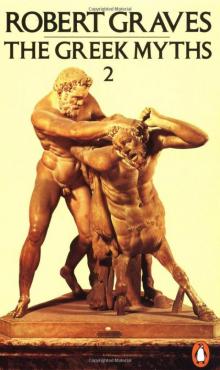 The Greek Myths, Volume2
The Greek Myths, Volume2 The Anger of Achilles: Homer's Iliad
The Anger of Achilles: Homer's Iliad Count Belisarius
Count Belisarius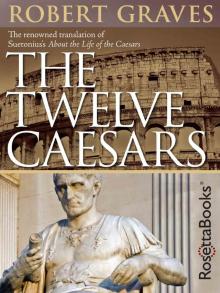 The Twelve Caesars
The Twelve Caesars Complete Poems 3 (Robert Graves Programme)
Complete Poems 3 (Robert Graves Programme) Homer's Daughter
Homer's Daughter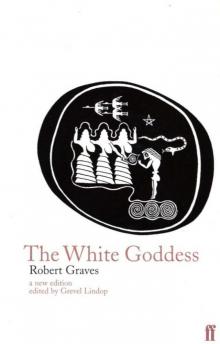 The White Goddess
The White Goddess Goodbye to All That
Goodbye to All That Claudius the God and His Wife Messalina
Claudius the God and His Wife Messalina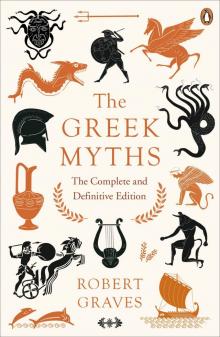 The Greek Myths
The Greek Myths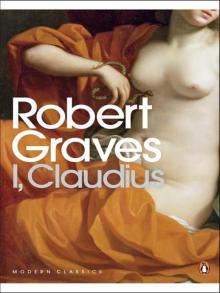 I, Claudius
I, Claudius The Islands of Unwisdom
The Islands of Unwisdom Complete Short Stories
Complete Short Stories The Golden Fleece
The Golden Fleece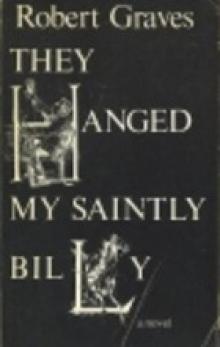 They Hanged My Saintly Billy
They Hanged My Saintly Billy King Jesus
King Jesus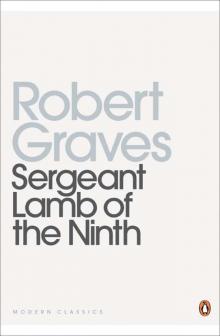 Sergeant Lamb's America
Sergeant Lamb's America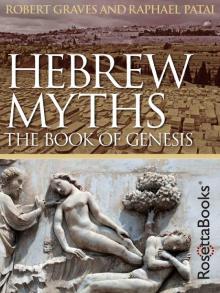 Hebrew Myths: The Book of Genesis
Hebrew Myths: The Book of Genesis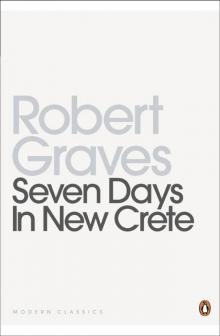 Seven Days in New Crete
Seven Days in New Crete Proceed, Sergeant Lamb
Proceed, Sergeant Lamb Claudius the God
Claudius the God Wife to Mr. Milton
Wife to Mr. Milton The Complete Poems
The Complete Poems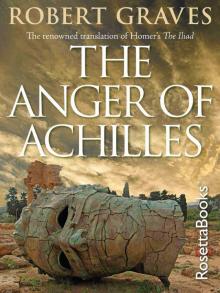 The Anger of Achilles
The Anger of Achilles Claudius the God c-2
Claudius the God c-2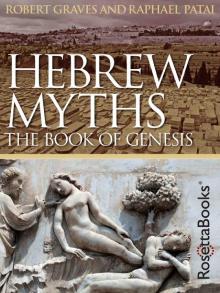 Hebrew Myths
Hebrew Myths I, Claudius c-1
I, Claudius c-1 The Greek Myths, Volume 1
The Greek Myths, Volume 1